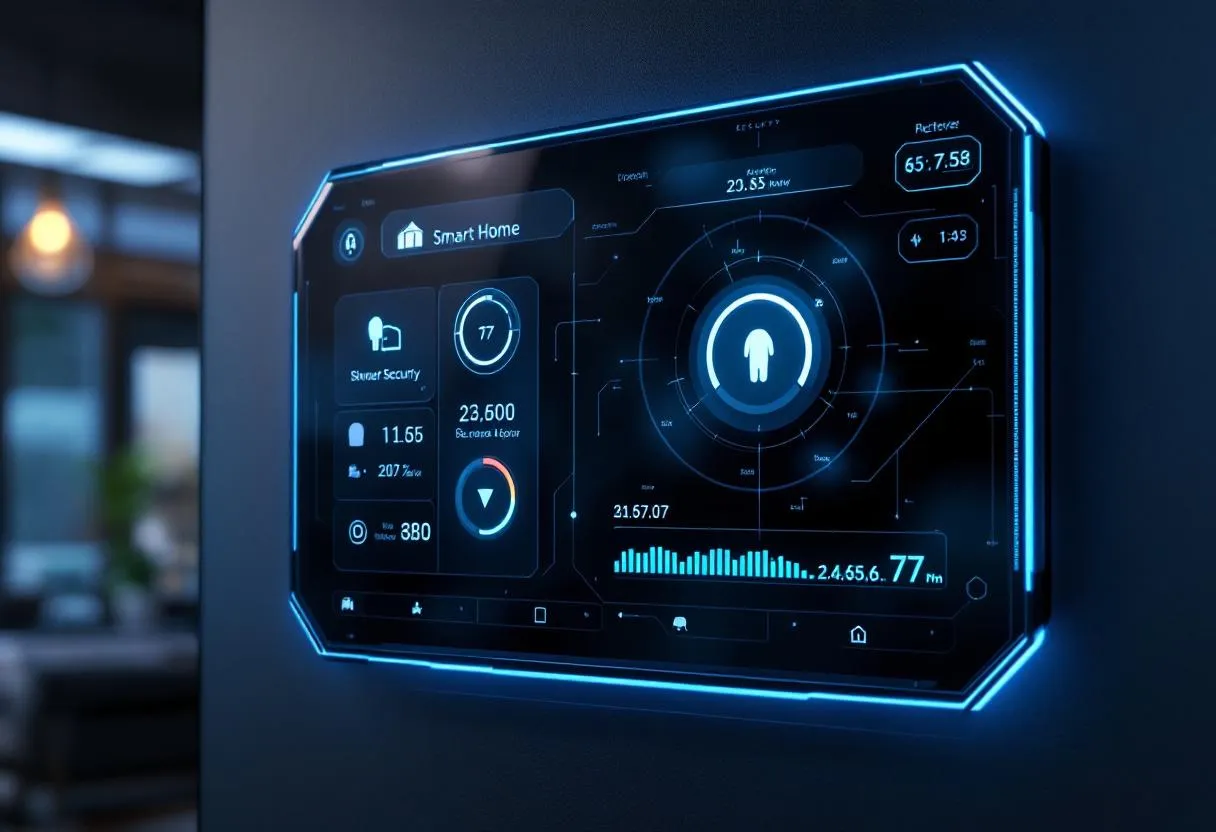
Securing Your Smart Home: A Practical Guide
- Amelia Stone
- 0
- Posted on
Okay, so you’ve got a smart fridge that tells you when you’re out of milk, a thermostat that learns your schedule, and lights you can control with your voice. Welcome to the Internet of Things (IoT)! But before you get too comfy in your connected paradise, let’s talk about security. Because, let’s face it, that convenience comes with a few potential risks.
I remember when I first started setting up my smart home. I was so excited about the possibilities that I completely overlooked the security aspect. Big mistake! It wasn’t until I read about some of the horror stories – hacked baby monitors, compromised security cameras – that I realized I needed to get serious about protecting my devices. And honestly, it was a bit overwhelming at first. Where do you even start?
One of the first things I did was change all the default passwords. Seriously, if you haven’t done this yet, stop reading and do it now! Default passwords are like leaving your front door unlocked. Hackers know them, and they’re the first thing they try. Then, while doing some research on securing my home network, I stumbled upon this site called Starburst, which offered a wealth of information and tools for managing online security. It was a real eye-opener, especially regarding the vulnerabilities that come with IoT devices. Who knew my smart toaster could be a security risk?
Understanding the Risks
So, what are the specific risks we’re talking about? Well, for starters, many IoT devices have weak security protocols. They’re often designed with convenience in mind, not security. This makes them easy targets for hackers. And once a hacker gains access to one of your devices, they can potentially access your entire network. That means your personal data, your financial information, even your physical safety could be at risk.
According to a 2023 report by Cybersecurity Ventures, IoT devices are projected to experience a 200% increase in cyberattacks over the next five years. That’s a pretty scary statistic! And it’s not just about individual hackers. Nation-state actors are also increasingly targeting IoT devices for espionage and sabotage.
Practical Steps to Secure Your Smart Home
Alright, enough doom and gloom. Let’s talk about what you can actually do to protect yourself. Here are some practical steps you can take to secure your smart home:
- Strong Passwords: I can’t stress this enough. Use strong, unique passwords for all your devices and accounts. A password manager is your friend here.
- Two-Factor Authentication (2FA): Enable 2FA whenever possible. This adds an extra layer of security, making it much harder for hackers to gain access, even if they have your password.
- Secure Your Wi-Fi Network: Use a strong password and WPA3 encryption for your Wi-Fi network. Consider creating a separate guest network for visitors.
- Keep Software Updated: Make sure your devices are running the latest software updates. These updates often include security patches that fix vulnerabilities.
- Disable Unnecessary Features: Turn off any features you don’t need. For example, if you’re not using the microphone on your smart TV, disable it.
- Monitor Your Network: Keep an eye on your network activity for any suspicious behavior. There are tools you can use to monitor your network and alert you to potential threats.
- Research Before You Buy: Before you buy a new IoT device, do your research and make sure it has good security features. Look for devices from reputable manufacturers that have a good track record of security.
It might seem like a lot, but trust me, it’s worth it. Taking these steps can significantly reduce your risk of being hacked. And honestly, once you get into the habit, it’s not that difficult.
Expert Opinion
According to Bruce Schneier, a security technologist and cryptographer, “Security is a process, not a product.” (Schneier on Security, 2008). This means that securing your smart home is not a one-time task. It’s an ongoing process that requires constant vigilance and adaptation. I find this really rings true, especially as technology evolves so quickly.

The Importance of Privacy
Beyond security, there’s also the issue of privacy. Many IoT devices collect data about your habits and activities. This data can be used for marketing purposes, or even worse, it could be sold to third parties without your consent. It’s important to understand what data your devices are collecting and how it’s being used.
Read the privacy policies carefully before you buy a new device. And be aware of the settings you can adjust to limit data collection. For example, you might be able to disable location tracking or opt out of personalized advertising.
Typical User Mistakes
Here are some common mistakes people make when securing their smart homes:
- Using the Same Password for Everything: This is a big no-no! If a hacker gains access to one of your accounts, they’ll have access to all of them.
- Ignoring Software Updates: Software updates often include critical security patches. Ignoring them leaves you vulnerable to attack.
- Not Securing Their Wi-Fi Network: Your Wi-Fi network is the gateway to your smart home. If it’s not secure, anyone can access your devices.
- Sharing Too Much Information: Be careful about what information you share online. Hackers can use this information to target you.
I know it sounds like a lot, but the truth is, securing your smart home is an ongoing process, not a one-time fix. Stay vigilant, stay informed, and stay one step ahead of the hackers. You’ve got this!

And remember, even the smallest steps can make a big difference. So, take a few minutes today to review your security settings and make sure your smart home is protected.
Ultimately, the goal is to enjoy the convenience of your smart home without sacrificing your security or privacy. It’s a balancing act, but it’s definitely achievable with a little effort and awareness. Good luck!